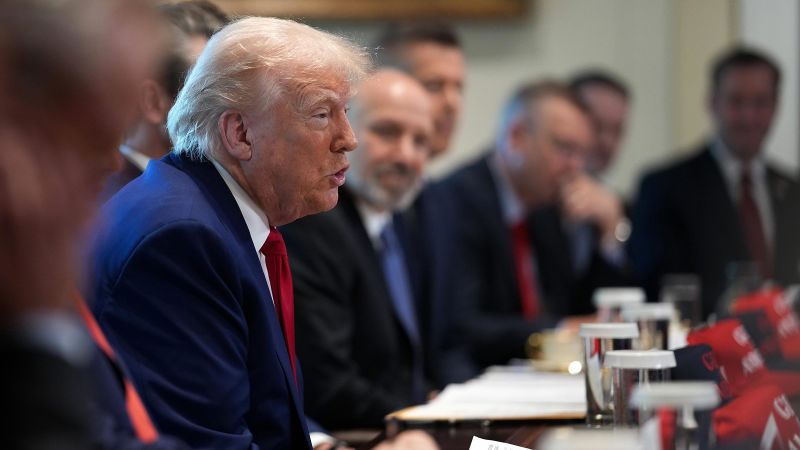On Friday, the White House revealed a budget proposal with a significant shift towards defense and homeland security funding, while simultaneously proposing drastic cuts to various programs previously emphasized by the Trump administration. The latest budget plan primarily targets expenditures on education, foreign aid, environmental protections, health services, and public assistance initiatives, signaling a clear pivot in financial allocation priorities.
This budget blueprint, envisioned by President Donald Trump, serves as a preliminary outline meant to guide Congress in crafting the fiscal year 2026 budget. Although it reflects the administration’s overarching fiscal vision, lawmakers are under no obligation to adhere strictly to this outline. The initial framework, often referred to as a “skinny budget,” is expected to be elaborated upon in more detailed proposals to be released in the weeks that follow.
Emphasizing Trump’s policy agenda, the proposal includes a notable increase in defense spending, proposed to rise by 13% to an estimated $1 trillion. Additionally, it earmarks a “historic” investment of $175 billion aimed at “fully securing the border,” as delineated in a letter from the Office of Management and Budget directed to Senator Susan Collins, the chair of the Appropriations Committee. This strategic funding allocation reflects the administration’s commitment to bolster national security and immigration enforcement capabilities.
The administration is actively advocating for these proposed funding increases to be incorporated into the budget reconciliation bill that Congress is currently working on. This legislative mechanism would allow the budget adjustments to advance without requiring votes from Democratic legislators, who traditionally oppose raising defense spending without proportional increases in non-defense budgetary allocations.
Importantly, this budget proposal signifies sweeping cuts to many discretionary programs that the Trump administration has been systematically dismantling since its inauguration in January. The plan stipulates a reduction of $163 billion from non-defense discretionary spending, representing an approximate decrease of 23%, thus bringing the budget down to around $557 billion.
Certain agencies and programs are positioned to receive some level of funding protection in this proposal. According to a senior administration official who spoke with reporters, sectors such as Transportation, Homeland Security, Veterans Affairs, and several other national priorities would maintain their funding. Notably, funding dedicated to Title I programs for schools serving low-income students, special education services, and Pell Grants would also be safeguarded from cuts.
However, it is essential to understand that these protections imply other agencies and programs will experience significant reductions. The proposal declares a substantial effort to address what the administration describes as entrenched bureaucracies that have emerged over the years, positioning them as obstacles to the interests of the American populace. Notably, this budget outline has reportedly been shaped in collaboration with Elon Musk’s Department of Government Efficiency.
Specifically, the proposal emphasizes the elimination of various diversity, equity, and inclusion initiatives, as well as environmental justice programs and other initiatives labeled as “woke.” The letter from the Office of Management and Budget further details agencies and programs that may face cuts, including but not limited to: the National Park Service, climate science research endeavors, foreign economic and disaster aid, United Nations peacekeeping contributions, certain types of educational funding, the Low-Income Home Energy Assistance Program, and critical health agencies such as the National Institutes of Health and the Centers for Disease Control and Prevention.
In summary, the overall discretionary budget outlined in this proposal amounts to $1.7 trillion, reflecting a 7.6% decrease compared to the current fiscal year. Noteworthy is the fact that the budget does not provide recommendations or adjustments for mandatory spending programs like Social Security, Medicare, Medicaid, and the Supplemental Nutrition Assistance Program (SNAP), commonly known as food stamps. These exclusions signify that although defense and security expenditures are prioritized, critical social safety net programs remain untouched in this proposal.
The insights contained in this budget blueprint undoubtedly provide a clear illustration of the administration’s strategic direction, one that prioritizes defense and security over social welfare and discretionary spending in various sectors. The conversations that will follow in Congress are likely to be heated, as lawmakers grapple with the implications of these proposed cuts on their respective constituencies.



